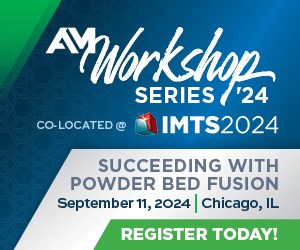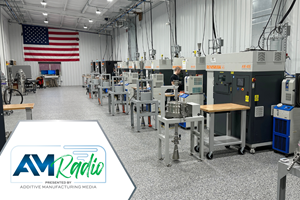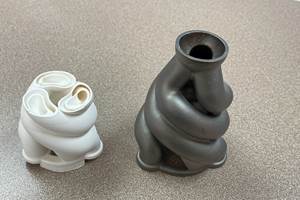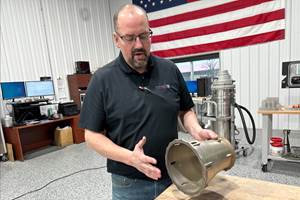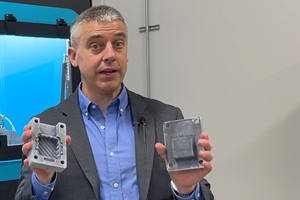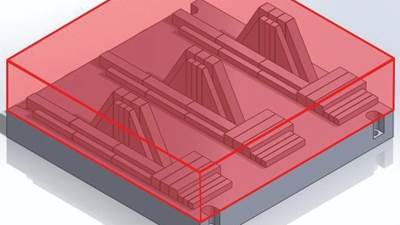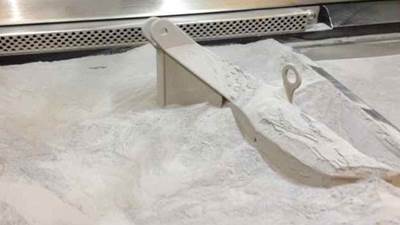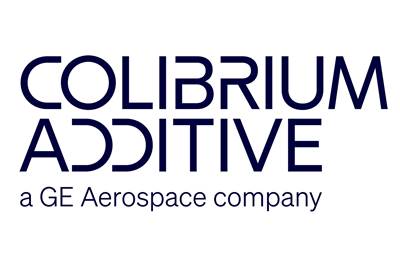AM 101: What Is Hot Isostatic Pressing (HIP)? (Includes Video)
Hot isostatic pressing has long been used for metal castings, but is now being applied as a valuable method for closing porosity in metal 3D printed parts.
Share
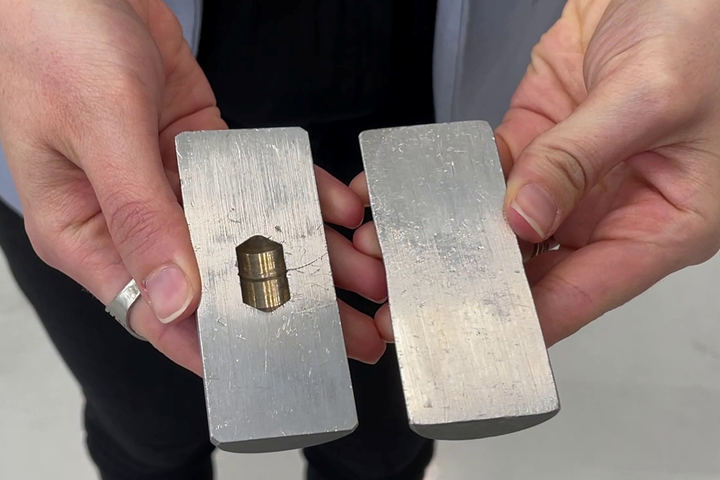
A dramatic illustration of the capabilities of HIPing. While the process is often used to mitigate porosity throughout a part, it can also be applied to close a much larger void like this one. More in the video below. JUMP TO VIDEO
What is hot isostatic pressing (HIP)?
Hot isostatic pressing (also called HIP or HIPing) is a process that consolidates material and closes pores within parts through the application of heat and pressure. It can be applied to many different materials including metals and ceramics. Like furnaces used for more general heat treating of metal parts, HIP furnaces relieve thermal stresses in cast, sintered and additively manufactured parts. However, HIP can also improve part density, ductility, fatigue resistance and other material properties. The HIP process can also include quenching, aging and other postprocessing steps.
How does HIPing work?
The HIP process takes place in a pressure vessel inside a high-temperature furnace. Parts are loaded into the chamber which is then heated, pressurized with an inert gas such as argon, and held at this temperature and pressure for a specified amount of time. The heat and pressure are applied evenly to the part (isotropically), forcing out porosity. The HIPing process can also include pressurized rapid cooling, which functions as a quenching step. HIP cycles can take 8 to 12 hours or longer.
What is the process for hot isostatic pressing of 3D printed parts?
HIPing is now being used for postprocessing of metal 3D printed parts, typically those produced by powder bed-based processes like laser powder bed fusion (LPBF) and binder jetting, though directed energy deposition (DED) parts are sometimes processed this way as well.
Printed parts — either cut off or still on their build plates — are loaded into baskets and transferred to the HIP furnace’s chamber. The chamber is filled with inert gas, heated and pressurized, then held at temperature and pressure for a specified length of time. HIPing “recipes” are customized to the particular material and desired final properties.
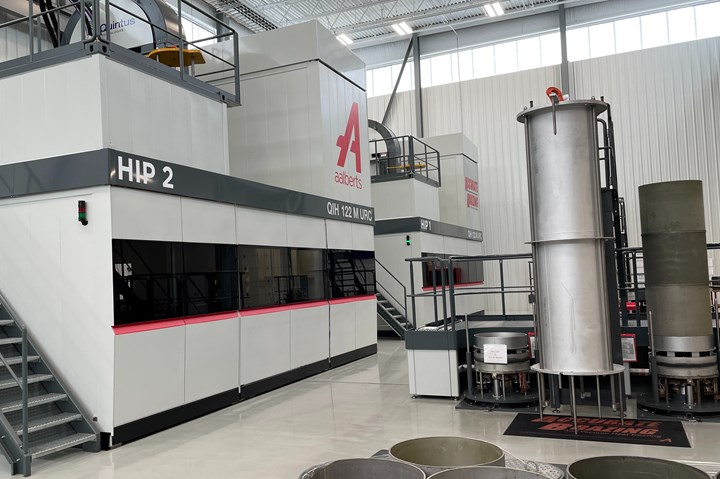
Parts needing HIPing are staged in metal baskets (far right) before being loaded into a pressure vessel and into the HIP furnace (left).
Why HIP 3D printed parts?
Powder-based metal 3D printed parts can suffer from issues like poor layer adhesion, porosity and other defects; HIP offers a way to mitigate these issues by consolidating the material and potentially reducing the severity of any remaining defects. HIPing creates a uniform microstructure in the material, which can improve properties.
Hot isostatic pressing also offers consolidation of steps in the manufacturing process. Many metal 3D printed parts require heat treat after printing to relieve residual thermal stresses; the HIP furnace can accomplish this heat treat alongside quenching, aging and other beneficial processes, saving time in the overall production of metal parts.
Related Content
Southern Indiana’s Thriving AM Part Producer — What I Saw at Innovative 3D Manufacturing: AM Radio #49
Recorded just after the visit to the laser powder bed fusion contract manufacturer, here is a conversation exploring observations and impressions of this company and its metal 3D printing work.
Read MoreCasting With Complexity: How Casting Plus 3D Printing Combine the Strengths of Both
Aristo Cast is advancing a mode of part production in which casting makes the part, but 3D printing enables the geometry.
Read MoreHow Machining Makes AM Successful for Innovative 3D Manufacturing
Connections between metal 3D printing and CNC machining serve the Indiana manufacturer in many ways. One connection is customer conversations that resemble a machining job shop. Here is a look at a small company that has advanced quickly to become a thriving additive manufacturing part producer.
Read MoreIn Casting and Molding, AM Simplifies Conventional Manufacturing
In new ways, additive processes are streamlining and enabling metal casting and plastic injection molding.
Read MoreRead Next
Why Does My 3D-Printed Part Cost So Much?
The machine, the facility and the material are just three costs behind the price tag.
Read MorePostprocessing Steps and Costs for Metal 3D Printing
When your metal part is done 3D printing, you just pull it out of the machine and start using it, right? Not exactly.
Read MoreGE Additive Rebrands as Colibrium Additive
As part of the brand name transition, both the Concept Laser and Arcam EBM legacy brands will be retired.
Read More
.jpg;width=70;height=70;mode=crop)



